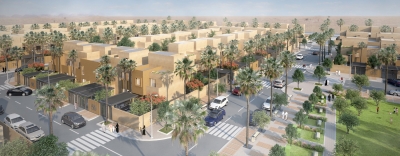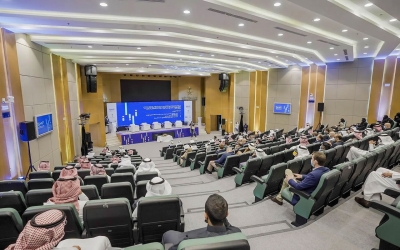
The Saudi Building Code is a law designed to ensure construction quality in the Kingdom of Saudi Arabia. It comprises a set of conditions and requirements derived from building-related laws, executive regulations, and appendices, aimed at ensuring safety and public health.
The Saudi Building Code is a comprehensive and integrated engineering safety assurance across the Kingdom’s diverse geographical environments. It aims to increase quality standards in structures by setting conditions that outline proper study principles and appropriate methods based on the country's circumstances and capabilities, using the code and applying its rules as a nationally recognized law.
Saudi Building Code
In implementation of Council of Ministers Resolution No. 279 dated September 25, 2004, which approved the general framework for the Saudi Building Code, the code was issued in two main classifications:
First, the terms, represented by the letters (ك ب س), which include the minimum required engineering standards for design, construction, operation, and maintenance, derived and formulated according to the requirements and laws in force in the Kingdom.
Second, the requirements, denoted by the letters SBC, which detail design methods and construction techniques. There are nine categories of terms and requirements: administrative and legal, architectural, structural, electrical, mechanical, health-related, water and energy conservation, fire protection, and existing buildings.
To maximize the benefits of the Saudi Building Code, which helps maintain the quality of structures over the long term and prevents various construction-related issues, the Saudi Building Code Application Law was issued by Royal Decree No. M/43 in 2017.
The law mandates applying the code across the entire Kingdom, as stipulated in the first paragraph of Article Two: "The code applies to all construction work in both public and private sectors, including the design, implementation, operation, maintenance, and modification of buildings, as well as to existing buildings in the event of renovation, change of use, expansion, or modification."
Objectives of the Saudi Building Code
The National Committee for the Saudi Building Code aims to achieve several strategic goals aligned with the aspirations for facilities that meet the highest standards of quality and safety. These goals include developing the content of the Saudi Building Code to improve the efficiency, safety, durability, and sustainability of buildings, as well as extending the lifespan of structures by applying the rules, regulations, and requirements of the code and utilizing Saudi standards. In addition, these goals focus on conserving energy consumption of all types and reducing the operational and maintenance costs of buildings while enhancing their resistance to natural disasters, proposing laws and executive regulations to oblige public and private entities to implement the code's requirements, building design standards, and criteria for earthquake-resistant buildings in the Kingdom, along with ongoing monitoring to achieve these goals.
Initiative to implement the Saudi Building Code
The first initiative to implement the Saudi Building Code was launched by the Ministry of Municipal and Rural Affairs (currently the Ministry of Municipalities and Housing) in 2020, announcing code application to all residential buildings on a guiding basis, while the mandatory application date is determined by the National Committee for the Saudi Building Code.
Continuing the development of the code and enhancing building quality in the Kingdom, the Ministry of Municipalities and Housing approved some amendments in October 2021 to the requirements of the Saudi Building Code for residential buildings, particularly related to residential design, to facilitate the work of engineering offices and beneficiaries.
The amendments aimed to ensure quality in construction practices and apply the highest safety standards, including the column width in residential buildings (reduced to twenty cm from twenty-five cm) and removing the ceiling height restriction, which was previously set at 3.65 m.
Inspection under the Saudi Building Code
In December 2021, the Sustainable Building Program, affiliated with the Ministry of Municipalities and Housing, received a certificate of approval from the Saudi Standards, Metrology, and Quality Organization, as the first inspection body to be accepted across all areas of the Saudi Building Code. The scope of approval covered all areas of the code, including the General Code, Structural Code, Electrical Code, Mechanical Code, Energy Efficiency, Codes related to Drainage Services and Plumbing Installations, Fire Protection, the Saudi Code for Existing Buildings, Green Buildings, and Residential Buildings.
Phases of implementing the Saudi Building Code
Since its inception, the implementation of the Saudi Building Code has progressed through five phases. Implementation of the first phase included administrative government buildings, high buildings (towers over twenty-three m), hospitals, and hotels. Implementation of the second phase covered assembly buildings such as mosques and sports facilities, educational buildings, commercial complexes, communication towers, industrial buildings, structures under twenty-three m high, and high-risk buildings.
Gradual implementation continued where the third phase covered assembly buildings like (wedding halls, cinemas, theaters), healthcare centers, furnished apartments, inns, and recreational service buildings. Implementation of the fourth phase covered business-related structures, including airports, banks, television stations, and post offices.
Implementation of the fifth and final phase began in July 2022, which included the types of buildings classified therein, in addition to what was implemented in the previous four phases, such as warehouses of all types, open and closed parking lots, and car repair shops.
Related quizzes
Related articles

